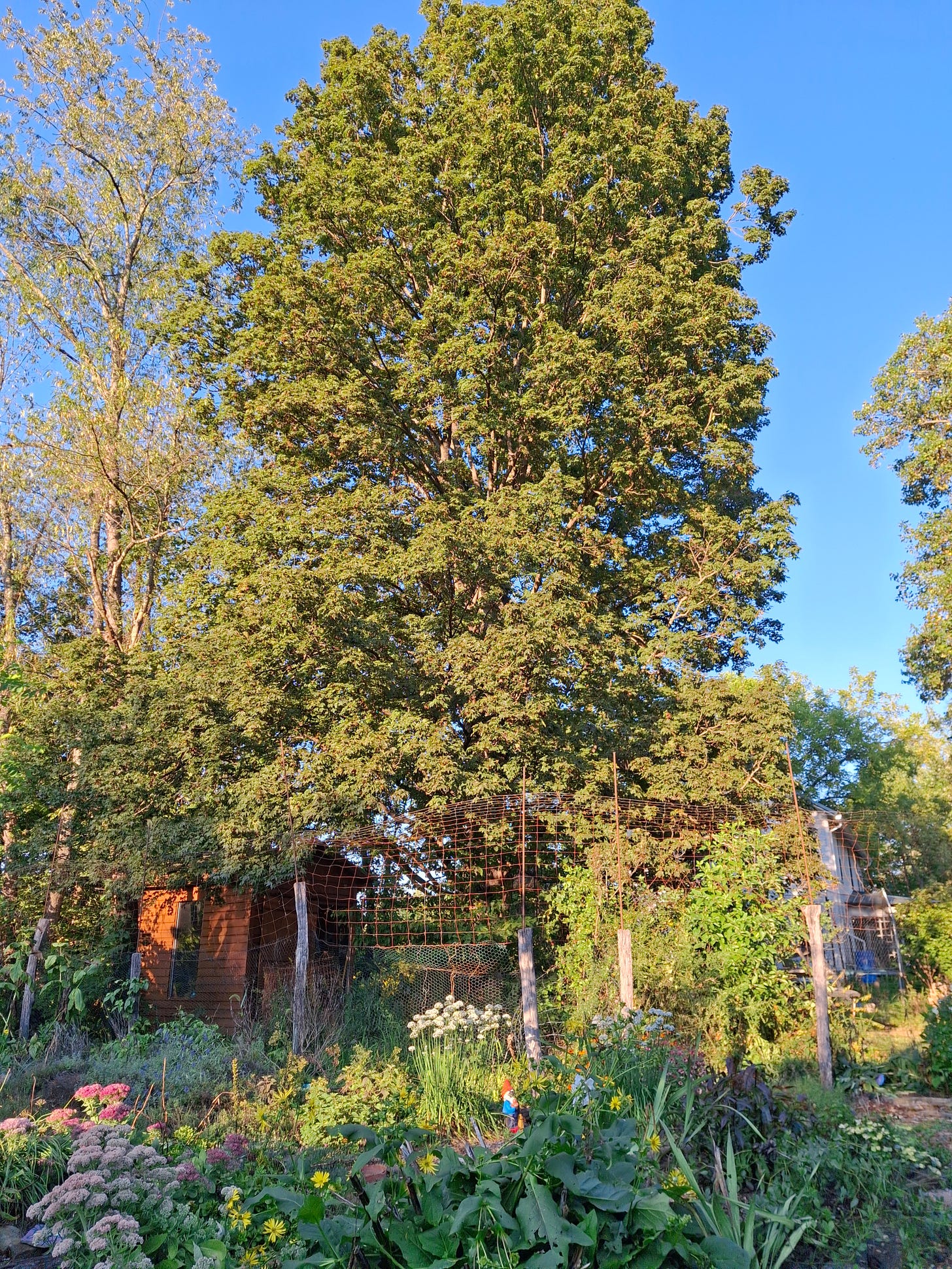The whitetail apocalypse
Happenings in the hinterland
Here in the Mid-Ohio Valley the air smells like autumn, a heady mixture of sun on freshly fallen leaves and cut grass. Until the wind changes direction, that is. Then the breeze carries the stench of the decaying corpses of whitetail deer cut down by a disease sweeping through this part of Ohio. Mother nature is cleaning house, and right now it doesn't smell pleasant here.
The culprit in this catastrophe is a midge that breeds in mud puddles and delivers a virus-laden bite to deer that congregate near watering holes during dry spells. Death results in a few days from epizootic hemorrhagic disease (EHD for short.) Confusion, fever, and unnatural thirst drive deer to bodies of water where they attempt to cool themselves, but often end up drowning.
A few weeks ago, rumors of the carnage began to spread eastward from the far side of the county. Our farm remained untouched until one Sunday morning I drove out to stock up on hay at a nearby cattle operation and found a dead doe in the driveway. EHD was here.
Since chaining up the doe and dragging it to the middle of the Savanna, we've found two more deceased on the property. Another lies on the far bank of the river, and one beside the road on my drive to work. A young, anterless deer and a still-spotted fawn remain alive, and are probably all that are left of “our deer,” the small herd that has been spending much of its time here.
The disease is killing deer in large numbers in West Virginia as well, but south of the WV state line they are safer. Below a certain latitude, some deer carry antibodies and herds have built up immunity so die-offs tend to be more limited. Above this same latitude, EHD reliably pops up here and there, killing large numbers of deer before disappearing only to surface elsewhere the following year.
While the situation is hardly making headlines beyond the region, here the loss is devastating. There will be no hunting season, no venison-stocked chest freezers, no home-made jerky shared at work. The bump in sales at restaurants and stores from sportsmen who have traveled from more urban locales will be missed. It will be like the loss of a weeklong holiday for obsessed locals who will no doubt be presented with honey-do lists by spouses eager to fill the vacuum. Diehards will insist that they just like to spend time in the woods and venture out regardless.
There are a few positives to the situation. For anyone in the area who has been contemplating starting a garden, the time is next spring. You will enjoy a year or two of relatively deer-free gardening before the population rebounds, which will allow the gradual establishment of garden infrastructure. Once deer return it will probably take them a while to discover your garden and include it in their circuit. You will eventually have to put up fences, but it might be several years before it becomes necessary.
It's an especially good time to start that reforestation project you've been thinking about. If your plan includes so many trees that building protection for each one is out of the question, act now. Even if a few deer show up and begin nibbling, many trees will have time to establish root systems and will easily recover from limited damage.
It is somewhat of a mystery as to why EHD pops up here and not there, although warm, wet springs followed by dry late summers are known factors. So might be the fact that there are simply too many deer, and nature is taking care of the problem for us. Whitetails thrive in the patchwork of fields, woodlands, and suburban backyards that covers much of Ohio. This mix of land use with miles and miles of edges where open areas meet tree-cover creates a haven for deer, and their numbers probably far surpass that which the deep forests of pre-colonial times could support. Perhaps the next generation of deer will be bigger and heartier, and sport the racks that will only be found this season in the dreams of frustrated sportsmen. Time will tell.






Here in the UK, midges from the continent have brought Bluetongue disease into England and it’s crept into Cymru. It hits sheep and outbreaks trigger movement restrictions of stock. I like the way you point folk to the advantages of your outbreak- the problem is the solution.
I'm wondering if the tick poplations will be impacted by the loss of a key vector. I hope so.